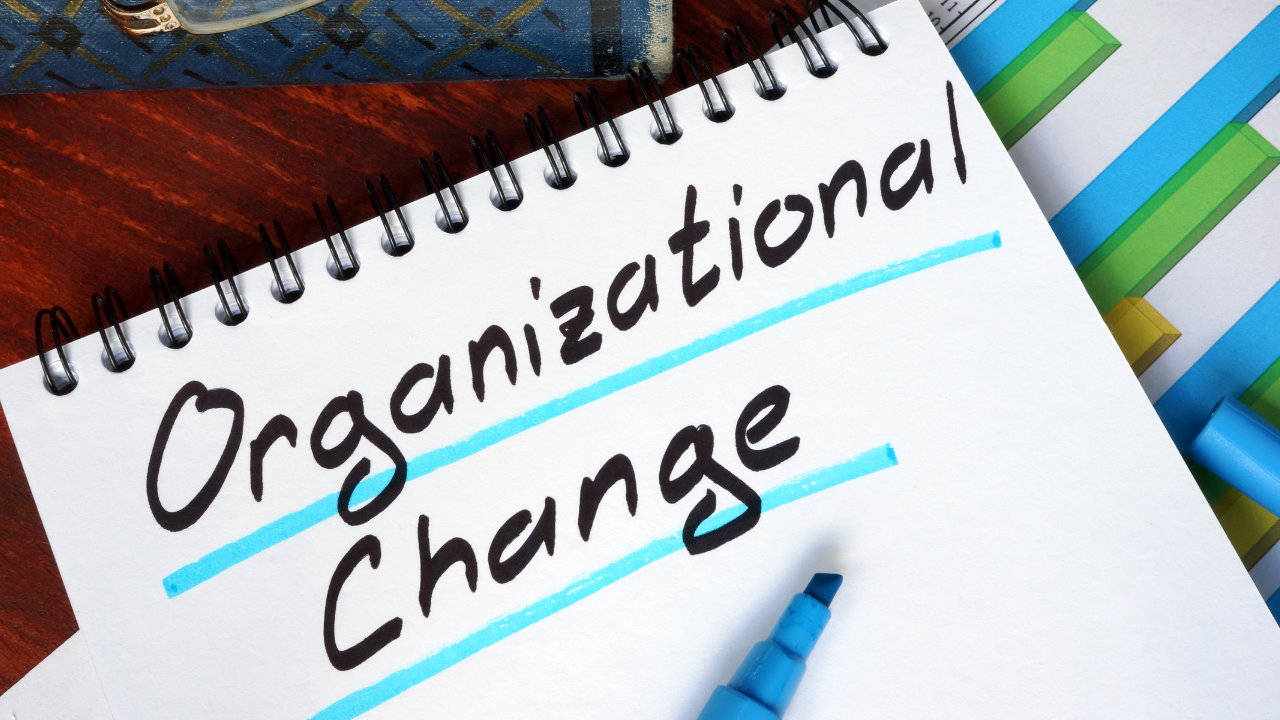The global business scape moves at a rapid pace and brings varied adversities for organizations.
These include such events we have recently seen as economic slowdowns, technological upheavals, and global pandemics.
McKinsey’s 2023 Global Resilience Survey found that only 31% of 300 individuals in executive and senior leadership roles across a variety of industries feel they are ready to meet the challenges ahead.
In the era of artificial intelligence in change management, this is frightening.
We, as change professionals, have an unprecedented opportunity to help companies endure such adversities (i.e., organizational resistance) and transcend them (i.e., organizational resilience) to keep the organization afloat.
Understanding Organizational Resistance
Organizational inertia can be defined as a form of resistance within an organization to change or adapt itself to different circumstances.
There are many forms of inertia:
- Status Quo Bias: Organizations are often highly resistant to change, favoring stable routines, processes, and structures over innovations. This happens because known routines and processes increase certainty relative to uncertainties that change would bring.
- Fear of the Unknown: When it comes to any change initiative, employees can become fearful of the outcomes, not wanting to let go of the perceived safety of the “status quo”.
- Silos and bureaucracy: While efficiency is desirable, needless hierarchies and departmental silos stifle communication and collaboration between teams. As a result, this restricts the creation and adoption of new ideas.
- Lack of Visionary Leadership: Leadership that is resistant to innovation or unwilling to change can foster a culture of resistance.
Overall, organizational resistance is exemplified when companies are slow to adopt emerging technologies or shift their focus to new consumer preferences.
It also happens when companies resist restructuring – even when the company is patently inefficient.
Embracing Organizational Resilience
In contrast with resistance, organizational resilience represents the ability of an organization to not simply fend off disruption but to thrive amid adversity.
Qualities of organizational resilience include:
- Approachability: Resilient organizations are open to change, encouraging exploration of novel ideas and operating models . To assist companies in reimagining more resilient capabilities and future-proofing their services, change professionals must lead change with a new set of principles. These include improving decision-making, addressing vulnerabilities in technology and systems, and ensuring human strength and adaptability to pioneer fresh practices.
- Open communications: This means having transparent channels of communication where employees at all levels can communicate with one another and share information openly.
- Lifelong Learning: Resilient organizations invest in training and development, enabling employees to develop the skills and knowledge that help them navigate technological and environmental changes. This helps them to innovate and adapt in often ambiguous circumstances.
- Strategic Agility: Future-focused strategies help proactive organizations anticipate disruptions before they happen, enacting preventative measures to limit the impact if they occur.
Organizational resilience can be developed through a set of overlapping, complementary, and reinforcing approaches that encourage resilience..
For example, resilient organizations encourage employees to experiment, be willing to fail and take risks, and think big.
Another approach involves scenario planning and risk management.
This means performing scenario planning analyses and developing playbooks for various potential strategic disruptions.
See more on how change management professionals can future-proof themselves.
While doing this, change professionals should design initiatives with sufficient slack to allow it to pivot around predictions.
Turning Resistance into Resilience
It’s not about overcoming resistance, but rather channeling it to help reshape the culture for growth and innovation.
This means becoming a stronger organization by attending to the source of dissent.
It also means turning organizational defense mechanisms into agents of innovation and change.
For example, imagine a manufacturing company where workers resist the organization’s commitment to adopt automation technologies out of fear that they will lose their jobs.
The company could resist or even penalize such expression.
It could also ignore them, hoping they will blow over.
Instead, the company could work to convert such resistance into resilience by empowering employees.
One way to accomplish this is through transparent conversations about the company’s strategy and their role in it.
For example, Intuit created a program called “Dare to Disagree” to foster a culture of innovation and risk-taking.
This sparked the development of several new products and services.
Beyond rhetoric, the company could provide training programs to upskill employees for the new jobs created by automation.
They can also give workers a stake in the implementation process by specifically seeking their input about new job design opportunities.
In her book, Prosilience: Building Your Resilience for a Turbulent World, Dr. Linda Hoopes looks at four key building blocks of resilience: calming yourself, resolving disruption, solving problems, and building power.
Put together, these four building blocks provide an easily navigable roadmap for applying lessons learned from the above examples and approaches.
Your Next Step: Transform Resistance into Resilience with The Coach Approach
Although organizational resilience may face organizational resistance, it is the key by which organizations can overcome adversity.
This means they not just survive but reach a level of maturity where they can withstand any trauma, and face all uncertainties in a sharp business world.
By encouraging change, inspiring creativity, and caring for their workers, all but the most rigid organizations can overcome the harsh conditions of running a business and perhaps even flourish on the other side.
Joining us in one of our upcoming Coaching Skills for Change Management Professionals Certificate Programs means being able to
- raise the impact of your contribution on your change initiatives from tactical to strategic
- co-create the relationships necessary for change to happen successfully, within the project team, its stakeholders and it sponsors
- facilitate constructive conflict resolutions to help stakeholder feel listened to and acknowledged
- show up with a positively neutral and confident presence, and
- build sponsorship coalitions that strongly support the direction of your project.
With these skills, you become closer to operating as a trusted advisor in transforming resistance into resilience. And, becoming more of a trusted advisor is where the future of the change management profession is heading.

























